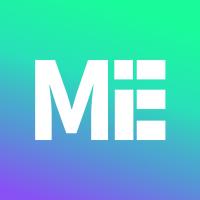In the latest issue of Forbes Chinese edition, CertiK co-founder and CEO Gu Ronghui reviewed his journey from a world-class academic institution to industry practice, emphasizing the guiding principle of "doing what should be done".
He shared how he led CertiK through the pandemic crisis, expanding from auditing to comprehensive security capabilities including anti-money laundering, compliance consulting, and team verification. In his view, technology and decision-making ultimately aim to respond to customer needs. This commitment to values has gradually become CertiK's brand gene and competitive barrier. As Forbes noted, companies are often marked by their founders' imprint. Gu Ronghui's mathematical thinking, diligence, focus, and value judgment not only drove CertiK's continuous development but also provided a more rational and sustainable reference path for the rapidly evolving Web3 industry.
The following is the full article:
Dialogue with CertiK Co-founder and CEO Gu Ronghui: The Industry Ecosystem Path of a Full-time Professor
Mathematics is the foundation of world operation - among entrepreneurs, few understand this profound meaning as deeply as Professor Gu Ronghui, especially after leading the Web3 security industry ecosystem through mathematical method-based formal verification.
Tsinghua top student, Yale PhD, current full-time professor at Columbia University, co-founder of the world's largest Web3 security company CertiK... What "cheat code" path and exceptional qualities connect these halos? Recently, we had an exciting conversation with this renowned scholar and entrepreneur.
[The rest of the translation follows the same professional and accurate approach, maintaining the original structure and tone while translating to English.]For a startup with an unstable growth period, lacking remote management experience, and a team primarily composed of socially awkward engineers, this was almost a fatal blow. To make matters worse, the extreme uncertainty caused by the pandemic severely affected team morale, and effectively managing remote work was an unprecedented and challenging problem globally.
However, time waits for no one. Just as CertiK was facing a severe test, the Web3 industry it served was entering an explosive period: innovative projects represented by DeFi and Non-Fungible Token were emerging one after another, with the number of active projects and financing scale continuously breaking records. Bitcoin soared from less than $5,000 in March 2020 to a high of $69,000. As the foundation of Web3's development, security demand also erupted. CertiK had to either seize this golden opportunity and soar or miss the chance and be left far behind by competitors.
Facing the crisis, Gu Ronghui did not shrink back but instead chose to breakthrough with the most challenging customer needs. In his view, pursuing long-term rather than short-term profit maximization is an emotional persistence. Even as a startup, CertiK should confront the most difficult security challenges in the industry, such as blockchain smart contract vulnerabilities, and bravely stand at the forefront of defending against hacker attacks. Meanwhile, he also adopted a series of innovative measures to maintain team work efficiency and tacit understanding, including regularly organizing online yoga classes, mailing office equipment and cameras to employees, and holding annual meetings in multiple regions. The correct strategic direction and flexible, powerful management innovation enabled CertiK to maintain technological leadership, rapidly iterate products, and serve a growing customer base under management pressure.
This is also the starting point of CertiK's core value of "doing what should be done". Consequently, CertiK formed a judgment logic different from other companies: compared to things that are market-hyped and easy to do, customers' true needs are what should be done, even if they are difficult to achieve.

CertiK Co-founder Gu Ronghui in an exclusive Forbes interview
At that time, as the market and customers grew, their needs far exceeded code security, extending to complex scenarios such as compliance, anti-money laundering (AML), and team verification. These new requirements were beyond CertiK's comfort zone, which could have maintained growth through mature audit services. "Whether to follow up became a focal point of internal team discussions, but the final consensus was—customers' true needs are what we 'should do'." Gu Ronghui further pointed out that for CertiK, a truly "right" company should grow together with the industry, actively respond to complex challenges, and provide sustainable solutions. Guided by this value, CertiK soared against the trend, becoming the ultimate survivor and the only growing top enterprise in the Web3 security track, where over 2,000 companies had converged at the time. They embarked on a dazzling high-speed expansion alongside the Web3 industry—explosive revenue growth, fully public audit reports with unparalleled transparency, successful product launches like Skynet and team verification, multiple financing rounds led by top institutions like Sequoia and Hillhouse, with a valuation of $2 billion, and a market share exceeding 60%.
The legend continues. To date, CertiK has served over 5,000 enterprises, discovered more than 150,000 security vulnerabilities, and been inducted into the security halls of fame for Samsung and Ledger. They have been thanked by Apple 6 times, with the 7th thank you about to be published. They have also protected Web2 enterprises like Xiaohongshu, Ctrip, Ant Group, and Meituan.
As our gaze returns to the interview room at Forbes China headquarters, Gu Ronghui, dressed in a light gray suit, speaks to the camera with the same dedication he had when focusing on mathematics and technology years ago. The path to the future continues to extend, perhaps towards an IPO or deeper industry responsibility, but Gu Ronghui is clearly not in a hurry to define the endpoint.






